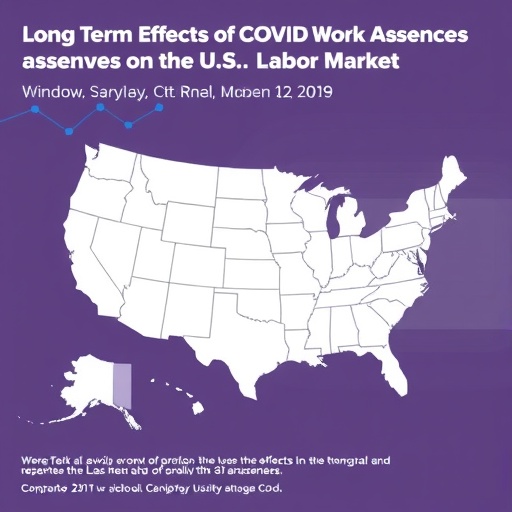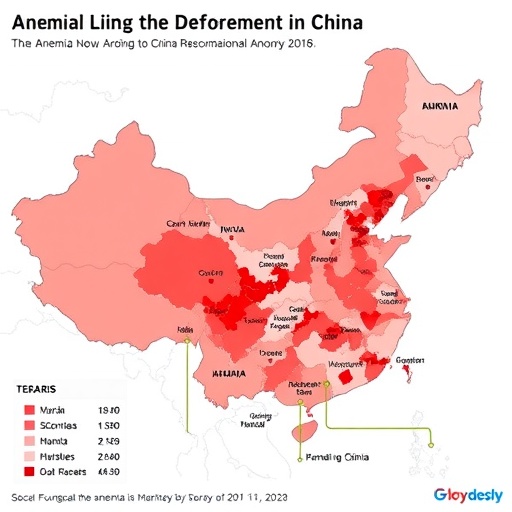In a comprehensive cohort study focusing on employed individuals across the United States, researchers have unveiled a new and striking baseline for work absences, one that reflects a transformation in public health dynamics under the influence of the COVID-19 pandemic. This new equilibrium mirrors absence rates previously observed only during the peak influenza seasons prior to the pandemic, suggesting a fundamental shift in how infectious diseases affect workforce attendance year-round. These findings open an important dialogue about the ongoing impact of viral pathogens on labor markets and the policy interventions necessary to safeguard both employee health and economic productivity.
The study meticulously tracked absenteeism through labor market data, providing a robust and nationally representative lens for understanding the impact of contagious illnesses on work attendance. By comparing current absence patterns with historical influenza-related absenteeism, the research delineates how COVID-19 has redefined expectations around illness-related workforce disruption. This realignment underscores the persistence of viral transmission outside typical seasonal boundaries, effectively dissolving the previous concept of a narrowly confined influenza season.
Crucially, this research highlights the significant implications for workplace health policies. The sustained elevated baseline of absences implies that COVID-19, while managed through vaccination and mitigation measures, continues to exert a substantive influence on workforce functionality. Decision-makers are urged to consider this in the development of health protocols, sick leave policies, and infection control strategies designed to mitigate disease spread and protect workers’ well-being, thereby maintaining operational continuity.
The study’s analytical framework utilized employment records and absence reporting systems to establish a detailed temporal profile of workforce absences associated with respiratory viral infections. This granular data revealed patterns that challenge traditional assumptions about influenza seasonality, illustrating an ongoing viral activity that disrupts normal professional environments throughout the calendar year. These insights provide a foundational understanding that could be pivotal for future epidemic preparedness and response in occupational settings.
One of the most consequential aspects of the study is its methodology, which leverages labor market statistics as a surrogate measure for public health trends. This innovative approach offers a scalable, real-time monitoring tool capable of detecting changes in disease impact without relying solely on clinical data. Such a synthesis of economic and health information potentially enables earlier identification of outbreak-related disruptions, informing timely public health interventions.
Moreover, the findings emphasize the necessity of integrating infection control measures within workplace environments as a standard practice rather than a temporary response. The sustained absenteeism rates suggest that SARS-CoV-2 and potentially other viral pathogens may become endemic, influencing labor availability and prompting continuous vigilance. This paradigm shift demands adaptive workplace policies focused on hygiene, vaccination, and rapid disease containment.
From a broader societal perspective, the study’s results provide compelling evidence of how infectious disease dynamics transcend public health, affecting economic stability and workforce productivity. The intersection between epidemiology and economics illustrated here advocates for interdisciplinary strategies that incorporate health data into labor market planning and occupational health standards. By bridging these domains, policymakers can formulate more resilient systems that accommodate the enduring presence of respiratory viruses.
The research also underscores the potential for nationally representative labor market datasets to serve as valuable epidemiological tools. By analyzing patterns of absenteeism across diverse demographics and sectors, public health officials can better understand transmission hotspots and vulnerable populations. This application extends beyond COVID-19 and influenza, offering a model for monitoring future emerging infectious diseases based on workforce trends.
Importantly, the cohort study calls attention to the human dimension of pandemic aftermath. For employees, fluctuating health risks translate into uncertain income and job security, particularly in sectors lacking comprehensive sick leave policies. The elevated absenteeism baseline thus not only reflects disease prevalence but also highlights socioeconomic vulnerabilities exacerbated by ongoing viral threats. Addressing these issues is central to promoting equitable health outcomes within the workforce.
Technically, this investigation employed longitudinal data analysis and time-series modeling to isolate changes in absence rates attributable to viral infections. Adjustments for confounding variables such as demographic shifts, employment type, and regional variations bolstered the analytical rigor. The robust statistical approach ensured that observed trends reflect true epidemiological changes rather than artifacts of data collection or reporting biases.
Additionally, the study’s results advocate for enhanced workplace infectious disease surveillance, utilizing integrated digital health tools and reporting mechanisms. Real-time absenteeism tracking combined with symptom monitoring could facilitate early detection of outbreaks, enabling swift isolation and mitigation actions. Leveraging such technological advancements aligns with the study’s call for data-driven public health policies that preemptively address the continuing challenges posed by viral pathogens.
In conclusion, this research provides a critical lens through which to view the evolving landscape of infectious disease impact on the workforce. The normalization of elevated absence rates beyond the traditional influenza window signals a new era in public health and labor relations, one requiring innovative policies, vigilant monitoring, and a commitment to protecting workers’ health. The findings serve as a clarion call for sustained collaboration between epidemiologists, economists, policymakers, and employers to navigate the complexities of post-pandemic working life.
Subject of Research: Impact of COVID-19 and respiratory viral infections on work absenteeism in the United States workforce
Article Title: New Baseline for Work Absences Reflecting Year-Round Viral Illness Impact Post-COVID-19 Pandemic
News Publication Date: Not specified
Web References: Not specified
References: (doi:10.1001/jamanetworkopen.2025.36635)
Keywords: COVID-19, United States population, Influenza, Seasonal changes, Public health, Crisis intervention, Data analysis, Viral infections
Tags: absenteeism trends during pandemicCOVID-19 work absenceseconomic productivity and employee healthinfectious diseases and workforce attendancelong-term effects of COVID-19ongoing effects of COVID-19 on employmentpandemic-related labor market dynamicspolicy interventions for workforce healthseasonal influenza and COVID-19 comparisonUS labor market changesviral pathogens impact on labor marketsworkplace health policies post-COVID






